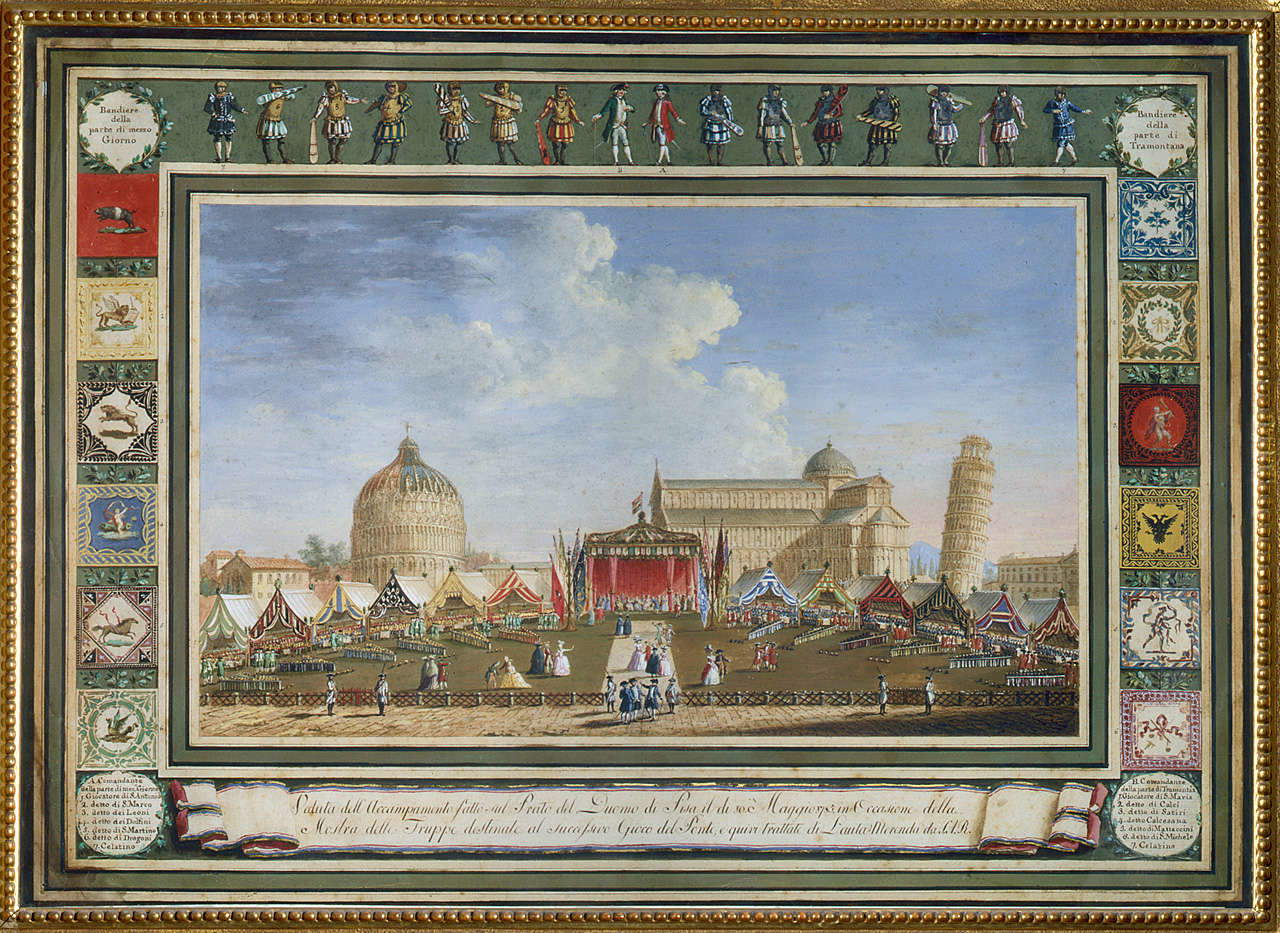From June 15 to September 30, 2024, the exhibition space of the Opera del Duomo Palace in Pisa, located in the Piazza dei Miracoli, will host the exhibition La Torre allo specchio. The Many Lives of the Bell Tower of Pisa Cathedral, conceived and organized by theOpera della Primaziale Pisana, on the occasion of the 850th anniversary of the laying of the cornerstone of the Tower of Pisa, and curated by Stefano Renzoni. Through more than 100 works, including drawings, engravings, paintings, sculptures and photographs ranging from the 13th century to the present day, the exhibition aims to illustrate how the perception of the world’s most famous bell tower has changed over the centuries. Indeed, the figurative arts bear witness to the evolution of the identity of the Tower of Pisa and the meaning attributed to it, which has varied with changing sensibilities and times.
Until the 17th century, the Tower was usually depicted as an integral part of the cathedral, seen as a bell tower marking liturgical hours and moments of connection between humans and God. However, from the 18th century, the Tower began to be increasingly depicted as an isolated element, separate from the other church buildings. This “secularization” of perception coincided with the spread of the Grand Tour, a phenomenon that anticipated modern tourism, transforming the Tower from a bell tower to a world icon.



Today, the Tower of Pisa has become a fetish and a self-referential icon, interpreted not only as a symbol of the city of Pisa, but also of Italy worldwide. This transformation unites it with other contemporary icons, such as the Mona Lisa, destined to be consumed by the gazes of visitors who are often unaware of the profound historical and cultural meanings they carry.
The exhibition therefore invites visitors to rediscover the history and religious significance of the Tower, with an introductory section curated by Francesca Barsotti, head of the Ecclesiastical Cultural Heritage of the Archdiocese of Pisa, who emphasizes its primary function of marking the time of faith. A room curated by Professor Giulia Ammannati of the Scuola Normale Superiore addresses the debate on the Tower’s autography, credibly attributing its authorship to Bonanno Pisano. Of particular note is the display of a 13th-century parchment, the first to show the Tower during the interruption of work due to ground subsidence.
Ample space is also devoted to modern and contemporary interpretations of the Tower by the likes of Umberto Bonetti, René Magritte, Keith Haring and living artists such as Giuseppe Bartolini, Gianni Lucchesi and Francesco Barbieri. The exhibition then continues with numerous pictorial and graphic accounts from the 15th to the 19th century, illustrating the evolution of the perception of the Tower through works by artists such as Giorgio Vasari, Benedetto Luti and Francesco Pascucci. A chapter, realized in participation with some professors from the University of Florence, is devoted to the restoration of the Tower, with extraordinary projects such as the introduction of an elevator into the bell tower, documented in collaboration with engineer Antonio Squeglia of the University of Pisa. Also on display is a collection of bizarre and impossible drawings sent from all over the world to the Opera della Primaziale Pisana in the 1970s.
Finally, the exhibition devotes ample space to the phenomenon of photography, documented through beautiful black-and-white exhibits, in a section curated by Manuel Rossi, Head of the Artistic Heritage of the Opera della Primaziale Pisana. The exhibition is open from 9 a.m. to 8 p.m., ticket on sale online (www.opapisa.it) and at on-site ticket offices. Ticket for the exhibition: 7 euros. Ticket also included free of charge in combinations full visit to the monumental complex (10 euros) or full visit plus tower climb (27 euros) and tower climb only (20 euros).
 |
| Pisa, an exhibition traces the history of perception of the Tower throughout centuries of history |
Warning: the translation into English of the original Italian article was created using automatic tools. We undertake to review all articles, but we do not guarantee the total absence of inaccuracies in the translation due to the program. You can find the original by clicking on the ITA button. If you find any mistake,please contact us.